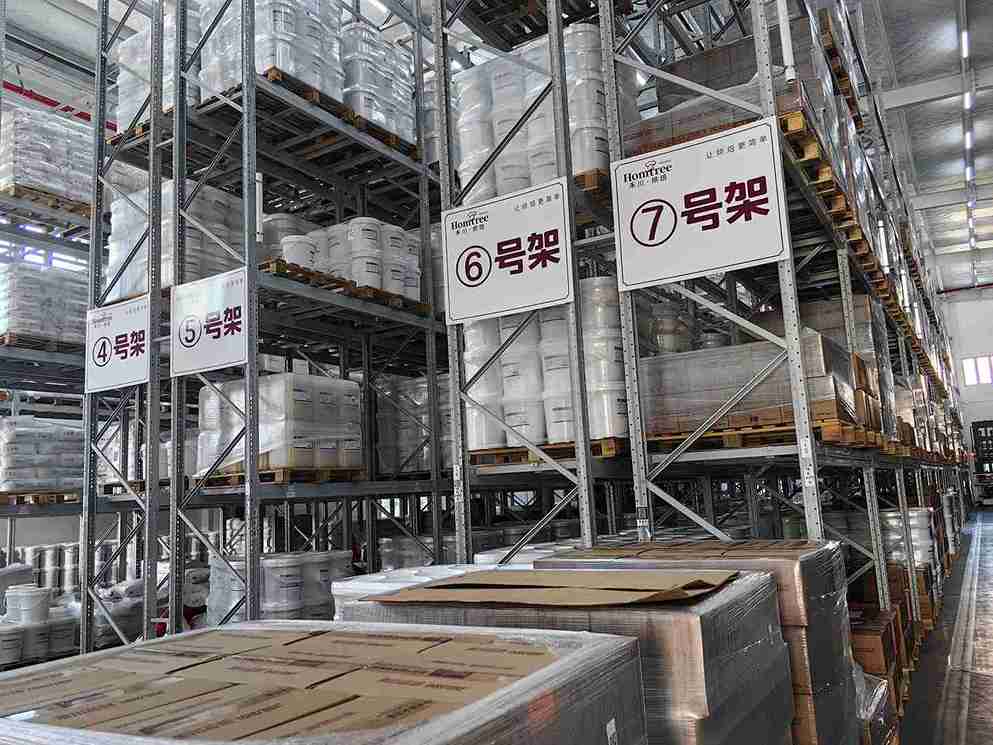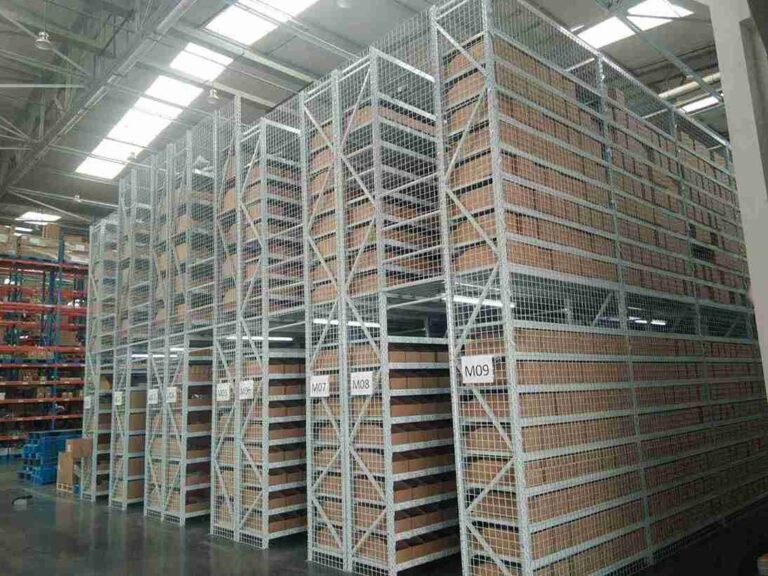📐 "First 50 Enterprise Queries Get Custom 3D Warehouse Design" Plan

Introduction: Revolutionizing Storage with Narrow Aisle Racking Systems
In an era where warehouse space is at a premium, businesses must adopt smarter storage solutions to stay competitive. Narrow aisle racking systems have emerged as a game-changing innovation, allowing companies to maximize storage density while maintaining efficient access to inventory. Unlike traditional wide-aisle setups, these systems reduce wasted space by up to 50%, significantly boosting storage capacity without requiring costly facility expansions.
This in-depth guide explores every aspect of narrow aisle racking systems, from their structural advantages and operational benefits to implementation strategies and real-world success stories. Whether managing an e-commerce fulfillment center, manufacturing warehouse, or cold storage facility, understanding how narrow aisle racking systems optimize space and workflow can lead to higher productivity, lower costs, and improved inventory management.

H1: What Are Narrow Aisle Racking Systems?
Narrow aisle racking systems are high-density storage solutions designed to minimize aisle width while ensuring uninterrupted access to stored goods. These systems typically require specialized material handling equipment, such as narrow aisle reach trucks or turret trucks, to operate efficiently in confined spaces.
H2: How Do Narrow Aisle Racking Systems Work?
Aisle widths are reduced to 5-7 feet (compared to 10-12 feet in standard systems)
Vertical storage is maximized, with some systems reaching 40 feet or higher
Specialized forklifts with tighter turning radii are used for precision maneuvering
Reinforced uprights and cross beams ensure stability in high-density configurations
Narrow aisle racking systems are ideal for businesses that need to store more inventory in the same footprint without sacrificing accessibility.
H1: Top 5 Benefits of Narrow Aisle Racking Systems
H2: 1. Dramatically Increased Storage Capacity
By shrinking aisle widths, warehouses can store up to 50% more pallets in the same space. This is particularly valuable for urban warehouses with limited square footage.
H2: 2. Faster Order Fulfillment & Improved Workflow
With shorter travel distances for forklifts, narrow aisle racking systems reduce picking time, leading to faster order processing and higher throughput.
H2: 3. Significant Cost Savings on Real Estate
Instead of leasing additional warehouse space, businesses can optimize their existing layout with narrow aisle racking systems, saving millions in expansion costs.
H2: 4. Enhanced Inventory Control & Reduced Handling Errors
Because narrow aisle racking systems allow direct access to every pallet, workers spend less time searching for items, reducing mispicks and inventory discrepancies.
H2: 5. Superior Safety & Durability
Modern narrow aisle racking systems are built with high-strength steel, seismic bracing, and impact guards, ensuring OSHA compliance and long-term reliability.
H1: Comparing the Best Types of Narrow Aisle Racking Systems
H2: 1. Selective Narrow Aisle Racking
Best for: Warehouses with high SKU variety
Aisle Width: 6-7 feet
Forklift Type: Standard reach trucks
H2: 2. Double Deep Racking
Best for: High-density storage of similar products
Aisle Width: 6-8 feet
Forklift Type: Deep-reach forklifts
H2: 3. Drive-In & Drive-Through Racking
Best for: Bulk storage (FIFO or LIFO)
Aisle Width: Minimal (single entry/exit lane)
Forklift Type: Standard counterbalance forklifts
H2: 4. Push Back Racking
Best for: Perishable goods & batch picking
Aisle Width: 7-8 feet
Forklift Type: Standard reach trucks
H2: 5. Mobile Aisle Racking (High-Density Mobile Shelving)
Best for: Ultra-compact warehouses
Aisle Width: Adjustable (on rails)
Forklift Type: Manual or automated retrieval systems
H1: Key Factors to Consider Before Implementing Narrow Aisle Racking Systems
H2: 1. Warehouse Dimensions & Clear Height
Measure ceiling clearance to determine maximum stacking height
Ensure floor load capacity supports heavy racking
H2: 2. Forklift Compatibility & Maneuverability
Turret trucks for very narrow aisles (VNA) under 6 feet
Swing-reach trucks for medium-narrow aisles (6-8 feet)
H2: 3. Load Weight & Pallet Size Variations
Confirm beam capacity matches heaviest pallet loads
Adjust racking depth for oversized or non-standard pallets
H2: 4. Future Expansion & Flexibility Needs
Choose modular designs for easy reconfiguration
Plan for potential automation integration
H2: 5. Safety & Regulatory Compliance
Follow OSHA, RMI, and FEM standards
Install aisle markers, protective guards, and anti-collapse systems
H1: Installation & Maintenance: Ensuring Long-Term Performance
H2: Proper Installation Techniques
Laser-guided alignment for precision
Anchoring to concrete floors for seismic stability
H2: Routine Maintenance Checklist
Monthly inspections for beam deflection & upright damage
Annual structural audits by certified engineers
H1: Real-World Success Stories: Narrow Aisle Racking in Action
H2: Case Study 1: E-Commerce Giant Increases Storage by 45%
A leading online retailer implemented narrow aisle racking systems, reducing wasted space and cutting order processing time by 30%.
H2: Case Study 2: Food Distributor Optimizes Cold Storage Efficiency
By switching to push-back racking, a frozen goods supplier increased pallet positions by 60% while maintaining FIFO compliance.
H1: Conclusion: Is a Narrow Aisle Racking System Right for Your Warehouse?
Narrow aisle racking systems offer unmatched space optimization, faster operations, and cost-effective storage solutions. By carefully selecting the right configuration, equipment, and safety measures, businesses can transform their warehouse efficiency.
For companies struggling with limited space or slow order fulfillment, narrow aisle racking systems provide a proven, high-ROI solution.
H1: Frequently Asked Questions (FAQs)
H2: 1. How much additional storage can I gain with narrow aisle racking?
Most warehouses see a 30-50% increase in storage capacity after switching to narrow aisle racking systems.
H2: 2. What forklifts are compatible with narrow aisle systems?
Turret trucks for aisles under 6 feet
Reach trucks for 6-8 foot aisles
H2: 3. Can narrow aisle racking handle heavy industrial loads?
Yes, heavy-duty narrow aisle racking systems support up to 5,000 lbs per pallet position.
H2: 4. Are narrow aisle systems suitable for automated warehouses?
Absolutely—many facilities integrate narrow aisle AS/RS (Automated Storage & Retrieval Systems) for fully robotic operations.
H2: 5. What safety measures are required for narrow aisle racking?
Aisle guidance sensors
Operator training programs
Protective column guards & anti-collapse mesh
By following these best practices, warehouses can maximize efficiency, safety, and storage capacity with narrow aisle racking systems.




